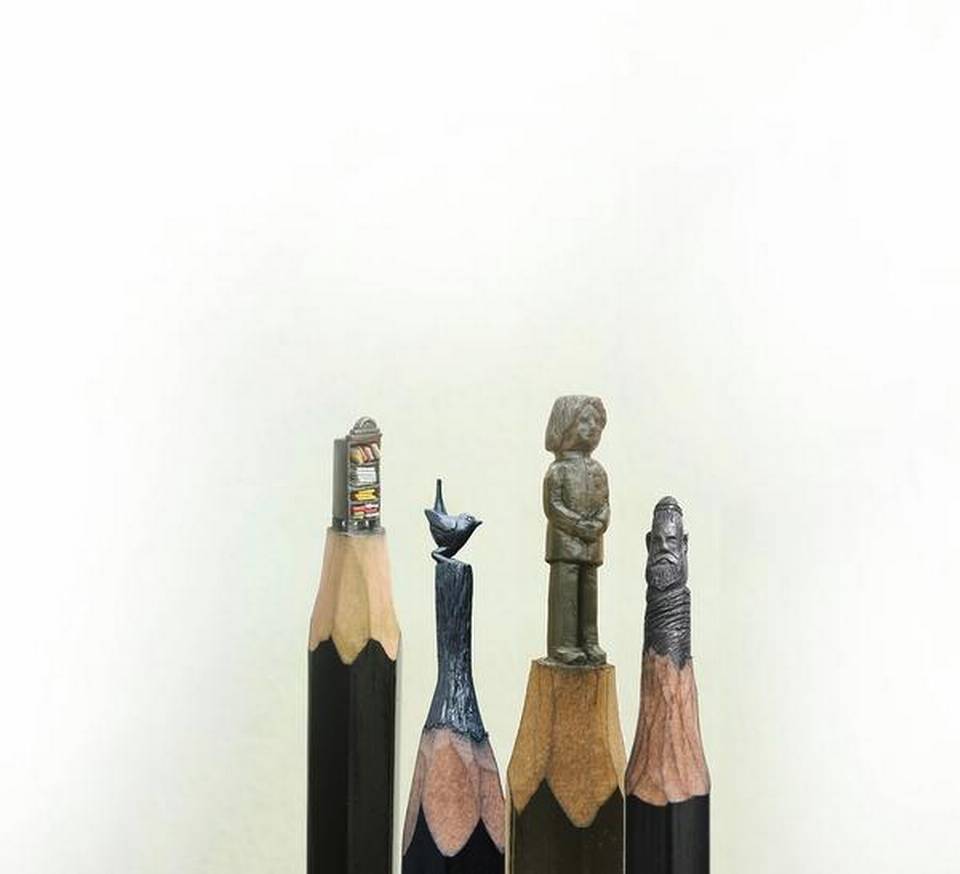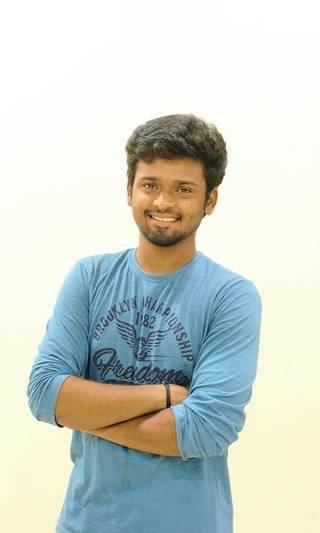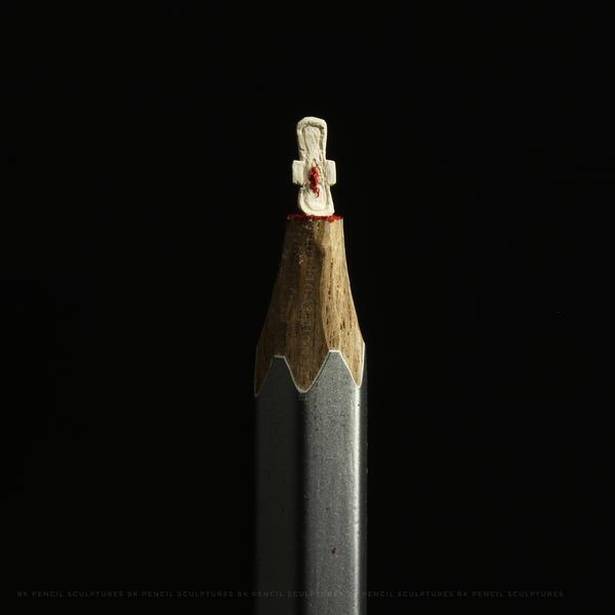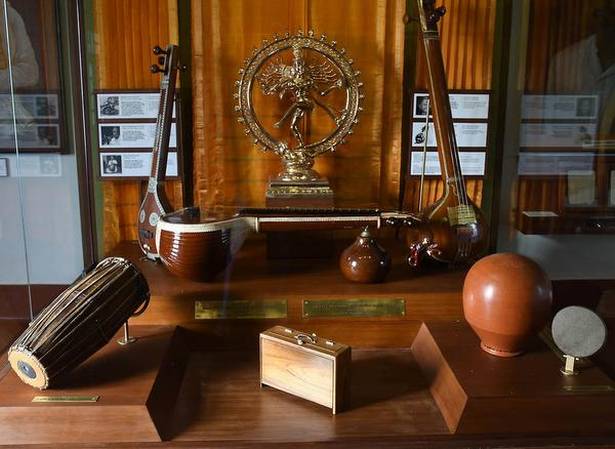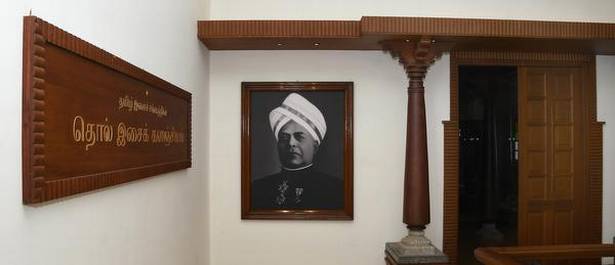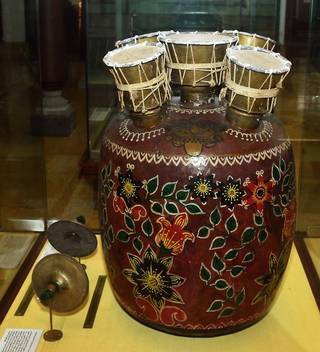Monthly Archives: March 2019
35
Chennai musician duo to pay tribute to the Ustad Bismillah Khan Saheb in his own tunes
Krishna Ballesh of Tansen Academy was about 13 years old when I first performed in front of Ustad Bismillah Khan Saheb.
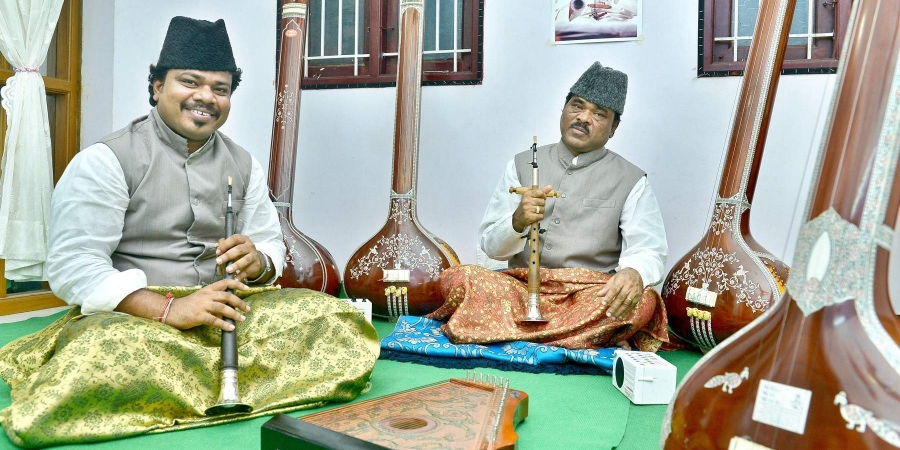
Chennai :
“I was about 13 years old when I first performed in front of Ustad Bismillah Khan Saheb. The memories are still fresh — I got his blessings and played the shehnai in Raag Madhuvanti for about 30 minutes. I even have a video recording of the moment. We at Tansen are extremely happy to celebrate his birth anniversary by doing what he loved — playing the shehnai and promoting Hindustani classical music,” says Krishna Ballesh of Tansen Academy, ahead of Guru Samarpan, a tribute concert to commemorate the birth anniversary of Bharat Ratna recipient Ustad Bismillah Khan. The concert is curated by Tansen Academy in association with Lasya — The Culture hub.
It will feature shehnai maestro S Ballesh and his son Krishna Ballesh. “My father was Ustad’s senior disciple. He accompanied him on several occasions and has received worldwide acclaim for his illustrious career. Eventually, I also became his disciple, ” says Krishna who trains about 500 students in his academy in Chennai.
The duo, along with a group of talented musicians will stage a Hindustani classical shehnai recital, laced with some of Khan’s hit Shehnai renditions in film music. They plan to take the celebrations to other cities.
(Guru Samarpan will take place today from 6.30 pm at Lasya’s Janaki Ammal Auditorium, APL Global School Campus, Okkiyam Thoraipakkam. For details, call 9787574158)
source: http://www.newindianexpress.com / The New Indian Express / Home> Cities> Chennai / by Express Features / March 30th, 2019
Smart fence from Erode to avert human-elephant conflict in Nepal
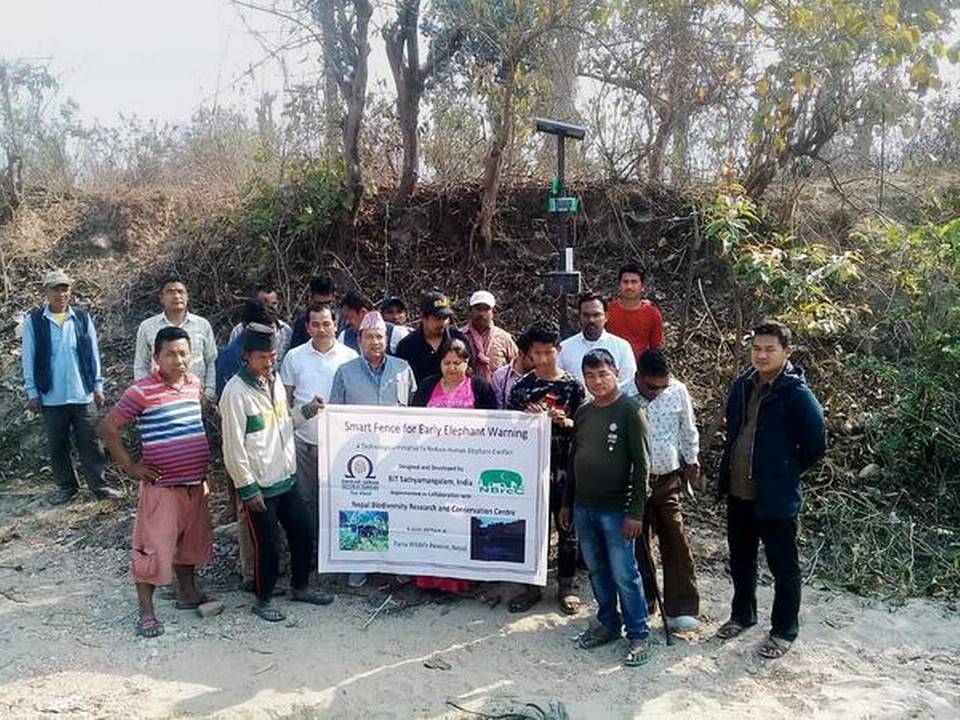
It was developed by a team of researchers from Bannari Amman Institute of Technology
A team of researchers from Bannari Amman Institute of Technology, Sathyamangalam, has installed a smart fence for early elephant warning at Parsa Wildlife Reserve in Nepal.
The team headed by Sanjoy Deb, and comprising R. Ramkumar and L. Rajasekar, designed and developed the system with active support from the college management. The long range LASER-based smart fence has already been installed at two places in Sathyamangalam Tiger Reserve.
Since crop raiding by elephants was a major issue in areas located near Parsa Wildlife Reserve in Nepal, the fence was installed there in collaboration with the Nepal Biodiversity Research and Conservation Centre, a NGO based in Nepal. The team visited Nepal recently and installed the fence near the reserve area.
The team members said that the system was specially designed with minimum electronic components. Local team members in Nepal have been provided training in maintaining the system.
They said that the team was now working on improving its features and cost minimisation to make it a true global solution.
source: http://www.thehindu.com / The Hindu / Home> News> Cities> Coimbatore / by Staff Reporter / Erode – March 27th, 2019
Kalakshetra’s Visual Arts Department gets a new lease of life
Lakshmi Krishnamurthy tells us how Kalakshetra’s Visual Arts Department is coming out of the shadows
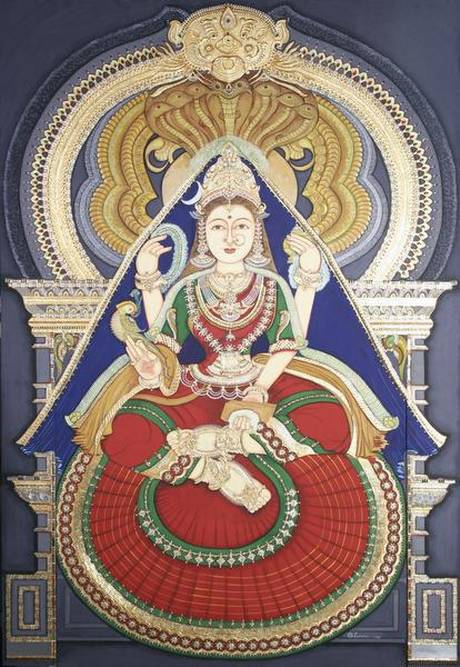
For decades since its establishment in 1936, Kalakshetra in Chennai has been known as a premier institution for Bharatanatyam and applauded for its dance drama productions. The music department has been a close second. But the visual arts section, despite being a vibrant training ground led by eminent artists and an inexhaustible support for the institution’s stage craft requirements, never got the same exposure as the performing arts.
Things are changing though. This February, the institution’s visual arts students, staff and alumni put up an exhibition in Chennai’s Lalit Kala Akademi — “Kalanubhava”, featuring paintings and sculptures. Organised by the Kalakshetra Alumni Association along with Kalakshetra Foundation, this exhibition was, somewhat shockingly, the first ever such event to take place since the department started in 1942.
In early March, when the Kalakshetra Alumni Reunion was organised in North India to coincide with Rukmini Devi’s birth anniversary celebrations, the visual arts alumni once again exhibited. The event that travelled from New Delhi to Chandigarh and Kalka included illustrated talks by Lakshmi Krishnamurthy, currently heading Kalakshetra’s Visual Arts department.
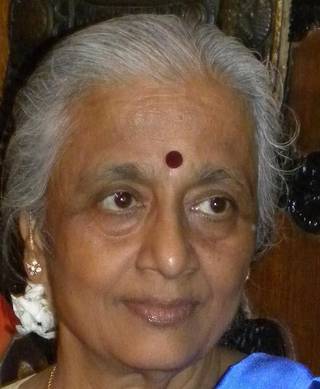
Lakshmi was honoured on a platform shared with Gurus N.S. Jayalakshmi, Shanta and V.P. Dhanajayan, C.V. Chandrasekhar, and C.K. Balagopal. “I was humbled to represent Visual Arts along with stalwart dance gurus,” says Lakshmi. The camaraderie, the presence of chief guest Yamini Krishnamurti and the praise showered on the exhibition by reunion organisers Swagata Sen Pillai and senior dancer Jayalakshmi Eshwar, she says, “brought tears to my eyes.”
She notes it was Kalakshetra’s current director Revathi Ramachandran who first addressed the visual and performing arts faculty on an equal footing and broached the idea of including an exhibition in Kalakshetra’s famous Art Festival, which for the past eight decades has featured only dance and music performances. These deliberations and alumni interest set the ball rolling.
The exhibitions paid homage not only to the aesthetics of Rukmini Devi (the topic of one of Lakshmi’s presentations) but also to the department’s first head, the late K. Sreenivasulu (1923-1995). A Fellow of the national Lalit Kala Akademi, Sreenivasulu is remembered alongside Jamini Roy for his love of rural art traditions and the ability to blend ancient techniques with modern sensibilities.
Lakshmi says, “Kalakshetra was/is synonymous only with dance. Now it is the genesis of the Visual Arts Department.”
Importantly, Kalakshetra’s dance students were never led to believe their art could flourish without the allies of music and visual arts. An important aspect of their training was a perspective on the interconnectedness of the arts and their relation to everyday life. The students learnt about the importance of raga choices, colours and fabrics, sculpture traditions and the intricate craft of coconut frond decorations; shared the campus with the Kalamkari unit and the dairy, and saw the moods of the sea close-up. Their routine included drawing and painting classes under Sreenivasulu, as well as informal training as his assistants during the preparation of props and sets.
Lakshmi and her colleagues too have designed sets and headgear and helped in restoration. The symbiotic relationship between performers and visual artists was underlined by Lakshmi at the Delhi alumni meet where she told the gathering, largely comprising dancers, “Your aharya (costuming and set design) needs us!”
Rukmini Devi’s first performance of Bharatanatyam in the 1930s highlighted this “confluence of visual and performing arts,” remarks Lakshmi. “She used a temple in the backdrop, and the front curtain had Nandi – The vahana of Shiva Nataraja.”
Experiencing the aesthetics of a performance in Kalakshetra, she feels, “spoils” viewers who then cannot settle for less. “The stage is set in a semicircular format, with puja area one step down on the right of the stage and the accompanists’ area on the left, also one step down. Lighting leads you to the puja area where the lamp devoid of the stem is aglow with five wicks and placed on a floral plate, thus avoiding visual disturbance. Focus is generated from accompanists’ area to the puja to the performer. The triangle is effective and alluring, the (spectators’) eyes dance with the dancers. The symphony is so phenomenal that the performance reaches a crescendo. From the entrance, the simple thorans, kolam and other decorations declare that minimal is beautiful.”
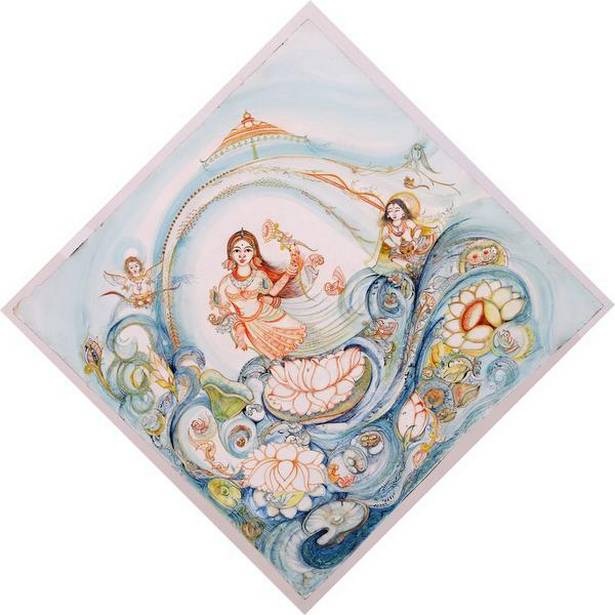
Symbiosis aside, dancers trained at Kalakshetra tend to carry a stamp — adhering to a recognised ‘gharana’ or bani of Bharatanatyam — while the visual artists display no such gharana allegiance. Perhaps, this came about because under Sreenivasulu, the training was individualised.
“With sir, it was one-to-one,” says Lakshmi, who enrolled in 1986. “He could turn a moth into a butterfly.” She did follow a syllabus, but when she asked for old techniques, “the floodgates opened.” She learnt various mural traditions, Thanjavur painting, glass painting and folk styles among others, bolstered by her penchant for academic research.
“When you are learning a new technique, copying is allowed — but not tracing — to focus on the nuances of the technique,” says the noted artist. But once the technique is acquired, “a little of one’s self should be there. It should come from within.”
Appointed as HOD in 2011, Lakshmi consolidated the syllabus as a tribute to her predecessor and guru. While artist Palaniappan helped her organise the other areas of study, explains Lakshmi, the Indian art component was completely designed by her. Topics include the shadangas (the six essential aspects of painting, including appearance, emotion, precision, etc.), human figure proportion based on the Shilpa shastras, miniature paintings, besides different mediums including glass and jewellery design, art direction and creative composition in pan-Indian techniques. In the fourth year, students choose a specialisation.
After the course, “they can pursue post-graduation in Madras University and post graduate diploma course in Santiniketan,” says Lakshmi, adding, “We are trying to open up to more universities.”
Pointing out that Kalakshetra is “the only college giving such a detailed Indian art programme,” Lakshmi states that students can enter teaching, art direction, advertising, logo designing, digital arts, and more.
Lakshmi submitted a proposal in 2013 to paint murals on the cottages along the path to the auditorium, featuring scenes from Rukmini Devi’s iconic Ramayana series of dramas, using various Indian painting traditions. “The idea was to invite artists, and students could help and learn at the same time.” She has discussed the scenes from each drama with Guru A. Janardhanan, among the handful of veteran dancers remaining, on whom Rukmini Devi choreographed the productions over 14 years starting 1955.
The purpose of the Kalakshetra Foundation Act of 1993, under which the Government declared Kalakshetra an institution of national importance, was to further the objectives for which Rukmini Devi founded it. With some artists who worked with Rukmini Devi still in the field, the time is more than ripe to build on the enthusiasm engendered by recent events and implement the mural painting proposal among others. Such projects, provided they are well thought through, would help clarify the significance of this institution to the current generation.
source: http://www.thehindu.com / The Hindu / Home> Entertainment> Art / by Anjana Rajan / March 29th, 2019
This artist carves works of art out of pencil tips
Kailash Babu shapes works of art out of pencil tips and is all set to teach the craft at a workshop in the city
“I have a fascination for pencils, I have collected some 800 of them so far,” says Tiruvallur artist Kailash Babu, currently in Chennai to hold a pencil carving workshop. Having just finished shopping for art supplies, he continues, “Wherever I go, I end up buying pencils.”
Creating miniature sculptures out of the leads of pencils is a niche he has developed over the years. The 25-year-old has created sculptures of farmers, birds, still life, and letters, on pencil leads with diameters ranging from 6 mm to as small as 0.7mm — his smallest, a chair, was on a mechanical pencil lead. He also makes miniatures out of graphite bars, clay, polymers, and even shapes letters out of rice.
However, this wasn’t always what he set out to do; Kailash had planned to be a macro photographer. “Maybe even wildlife photography,” he adds, “When I was 18, I was researching macro photography, and stumbled upon the works of Brazilian artist Dalton Ghetti. He was formerly a carpenter, who eventually got into pencil carvings.” Dalton left a big mark on Kailash’s creative bent of mind. Though he dropped pursuing photography, his interest in all things macro remained alive and well.
“I started experimenting with pencil carving using pocket knives, shaving blades… I’d even take out blades from sharpeners,” he says. “I was initially reluctant to sell my art. I didn’t like parting with my works. But after four years of BTech, I still had two arrears. Then I decided I might as well pursue art full time.” Today, he has 185 sculptures in pencil leads alone.
His latest work — a series of carvings based on the theme of sexual harassment and women safety — will be displayed next month at Lalit Kala Akademi. He has also made a carving of a bloodied sanitary napkin, in order to raise awareness about menstruation among men.
_____________________
- Kailash first sketches the design on to paper, then transfers into a 3D model on clay. He then works on a cylindrical wooden bar, before finally working on the pencil lead.
- He prefers using Jumbo pencils for work that needs more detailing. “Germany makes some of the best ones,” he says.
__________________________
It’s on his Instagram account that Kailash gets most of his orders. But along with that, “I also get a lot of DM requests to teach this craft,” he says, explaining why he started conducting workshops. In his upcoming Chennai workshop, he will be teaching lettering, and the basics of making sculptures. “When you work on letters, you get to practise all sorts of curves that will be useful in making sculptures,” he says.
But the most important skill of all is patience, he says. “It’s true of any art. There have been times I have had to make the same miniature 16 times in a row, before I got it right. You can finish the whole thing, but it will get messed up or break when you are putting the finishing touches,” he says. “You have to keep going despite repeated failures. It’s a useful life lesson as well!”
The workshop will be held at Studio Pepperfry, in Phoenix MarketCity, Velachery, on March 31, from 10.30 am to 5.30 pm. Call 8190808991, or follow Kailash @bk_pencil_sculptures_
source: http://www.thehindu.com / The Hindu / Home> Entertainment> Art / by Sweta Akundi / March 28th, 2019
A batsman’s success story in thirteen chapters
Alvin Kallicharran is the founder of a cricket academy based out of Raleigh, North Carolina in the US.
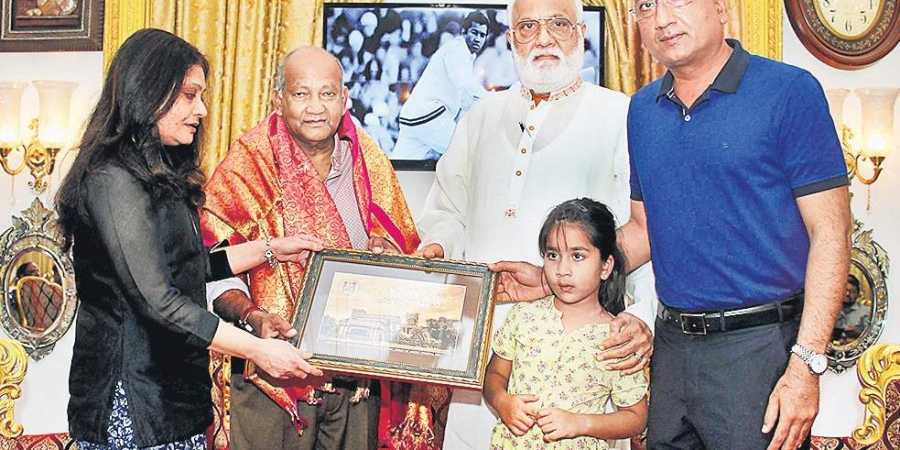
Chennai :
Chennai holds a special place in former West Indies cricket captain and legendary batsman Alvin Kallicharran’s heart as his mother Padma was born here. Each visit is a celebration, and he was here on Monday for the pre-launch of his upcoming book Colour Blind. The event was held at Amir Mahal where he spoke about cricket and the book.
“In the book, I recount four important stages of my life — from growing up as an impoverished child to becoming a cricketer, trying to find meaning to life through cricket, and finally recognising the need to give back to the community with spiritual guidance and awareness,” said Alvin. The book is expected to be released in May 2019.
Sharing a matchbox-sized home in Guyana with around 20 people including 11 siblings, Alvin has come a long way. “At the age of 10, I was working at a rice mill from 8 am to 6 pm. I used to come back home, eat food if there was any left, or head to the streets to play cricket where coconut branches were our bats and we made ball with wood from the tree. Injuries were so common that at least one person used to be in a hospital every day,” he said.
Through the 13 chapters in the book, he shares various stories including his childhood defined by his status as the grandson of indentured labourers in the sugar plantations of Guyana, his encounters with the great cricketers and how his upbringing helped him adapt rather quickly, his test match debut century, the daily rigors and demands required to become a professional sportsperson, significant issues of cheating, questionable run out tactics, umpires without accountability and much more.
Alvin Kallicharran is the founder of a cricket academy based out of Raleigh, North Carolina in the US.
source: http://www.newindianexpress.com / The New Indian Express / Home> Sport> Cricket / by Express Features / March 27th, 2019
TA Pugalarasan: Chennai’s turtle man creates a sea change among locals
Pugalarasan hopes to have a small research vessel someday to study endangered marine life.

On a chilly December morning in 2002, T.A Pugalarasan was walking on the beach in his fishing village Periya Neelankarai when he spotted a stranded sea turtle. He instinctively decided to save the turtle and swam 200 metres beyond the waves to release it back in the ocean. “I had seen several dead sea turtles on the shore. But that was the first time I helped a stranded turtle,” says Pugalarasan.
Like many youngsters in his village, Pugalarasan was initially indifferent to marine life and its conservation. There was even a time when he and his friends used to play with turtle eggs. Life took a different turn for him when he met conservationist Dr. Supraja Dharini, founder of the Tree Foundation.
“My entire perspective about the ocean and its life forms changed after I met Dr. Supraja. When I was younger, I did not know about sea turtles. So I would dig out their eggs and use them as balls to play cricket. They have a very soft shell, unlike other eggs, and so bounce off the ground. I still remember when I met her for the first time, I asked several questions like why we should put turtles back into the sea and why they should be protected,” adds Pugalarasan.
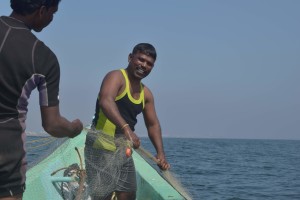
( Photo | Sunish P Surendran)
After interacting with Dr. Supraja, Pugalarasan realised that protecting sea turtles is like protecting the wealth of the ocean. Today Pugal is part of the Sea Turtle Protection Force (STPF) which comprises over 165 fishermen living along the Coromandel Coast. STPF is an initiative started by the Tree Foundation under the aegis of Dr. Supraja.
Over the years, Pugal and his STPF member have created a sea change in the attitudes of the local community towards the turtles. “We conduct many awareness programmes on endangered marine species in fishing villages, schools and colleges using dance, drama and documentaries,” says Pugal.
“In some fishing communities, the fishermen eat sea turtles. We have built a strong network of informers to save the turtles. We work jointly with the Marine Police, Fisheries Department staff and the Forest Guard,” he says. There was an instance when two turtles were going to be killed for a wedding dinner. On receiving an alert, Pugalarasan along with the Marine Police conducted a rescue operation and saved the turtles. Later they were released into the ocean.
But today things have changed and thanks to the strong network, whenever a turtle, dolphin or whale is stranded, fishermen inform Pugal or the Tree Foundation office. “Whenever I get a call from the fishermen about a stranded turtle or dolphin, I immediately drive to the place in our ambulance with the stranding kit. I give first aid to the injured turtle and bring it to the rescue and rehabilitation centre,” adds Pugal.
Once the turtle is brought to the centre, it is inspected and the treatment is started. Pugalarasan himself has helped in the rehabilitation of more than 40 turtles.
“I have seen Pugal when he was in his early 20s. Since then he has been part of Tree Foundation’s ‘Save the turtles’ mission. He has also helped Tree Foundation expand its conservation to other states. Apart from the turtle conservation initiatives, he along with his STPF members carry out several clean-up programmes along the beaches to make people understand the problems of pollution,” says Dr. Supraja.
Pugalarasan received the prestigious Ocean award from the Boat International in 2017 for pursuing sustainable ways of fishing, protecting sea turtles and educating people about endangered marine species.
He hopes to have a small research vessel someday to study endangered marine life. “I want to share everything I learn about the ocean and marine life. I want people to understand that we must take care of the ocean and its rich marine life. People should also refrain from polluting the ocean with plastic, chemical waste and other trash,” adds Pugalarasan.
source: http://www.newindianexpress.com / The New Indian Express / Home> States> Tamil Nadu / by Nandalal / Online Desk / March 27th, 2019
A museum of ancient instruments in Chennai
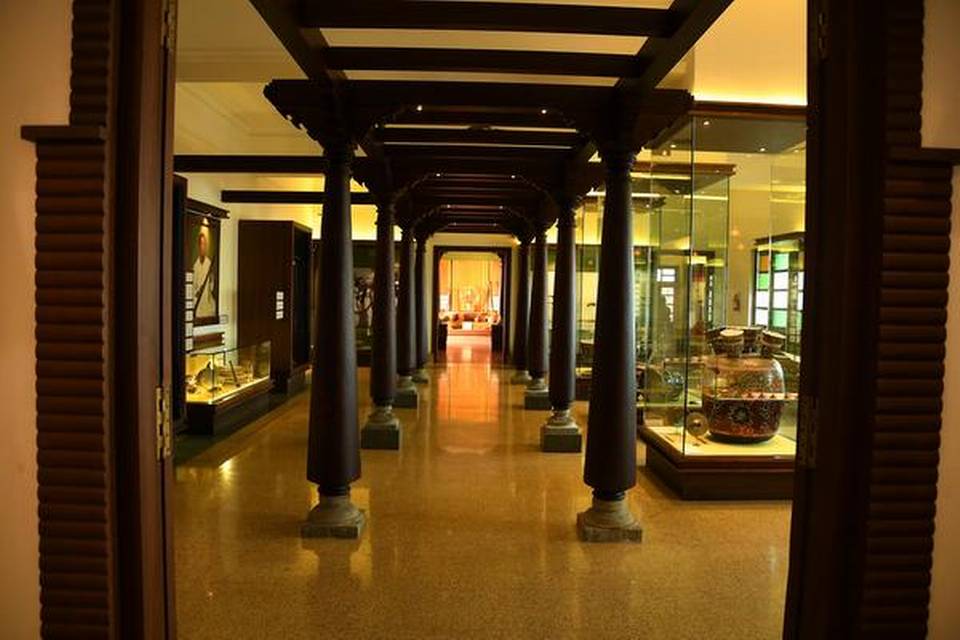
Tamil Isai Sangam’s museum has on display rare and vintage musical instruments
Tamil Isai Sangam was founded in May 1943, with Raja Sir Annamalai Chettiar as the president and R.K. Shanmugam Chettiar as the vice-president. Annamalai Chettiar’s three sons — Muthiah Chettiar, Mayor Ramanathan Chettiar and Chidambaram Chettiar — were also involved with the Sangam. Many are the milestones in the history of the Sangam, the latest being the inauguration of Tol Isai Kalanjiyam — a museum of musical instruments at the Raja Annamalai Manram premises in Chennai. This writer caught up with Valli Arun, the moving spirit behind the museum. She is the great granddaughter of Raja Sir Annamalai Chettiar and granddaughter of M.A. Chidambaram Chettiar. Her father A.C. Muthiah has been honorary secretary of Tamil Isai Sangam since 1993. Valli became a member of the board of trustees in August 2016. Her suggestion that a museum of musical instruments should be established, was instantly approved by the board.
“My grandfather M.A. Chidambaram Chettiar had collected many musical instruments, which were kept in the Sangam, but not displayed as in a museum. Grandfather also had a fondness for art, and he got artist T.V. Ratnam, to paint portraits of vidwans. The gallery was then just a hall, with long cases containing the instruments. What I wanted was an aesthetically designed museum, with a proper display. While plans for the museum began in August 2017, site work started only in May last year. We were very lucky to have found an excellent architect in Katheeja Talha,” says Valli.
Valli acknowledges that Dr. Lakshmi Poduwal, former Principal of the Sangam’s college, has been a pillar of support. Dr. M. Thangarasu, former Vice-Chancellor of Periyar University came up with crisp write-ups about the Sangam. On display in the museum are two visitors’ books, one of which pertains to the gallery and has signatures of Dr. Rajendra Prasad, President of India, Bishnuram Medhi, Governor of Madras in the late 1950s, Dr. Sarvapalli Radhakrishnan and His Highness Jayachamaraja Wodeyar of Mysore. One of the exhibits is a handwritten letter from Rajaji dated 1946, where he talks of a Tamil’s natural proclivity for music.
“Eighty instruments in the museum are from grandfather’s collection. I wanted to add ones that were used by well known musicians. My mother recalled that my father’s childhood friend’s sister Nalini was married to T.N. Rajaratnam Pillai’s grandson Sarabhoji. So, mother contacted Nalini, who gave us two of TNR’s nagaswarams. Dr. Poduwal procured Papanasam Sivan’s spectacles and two handwritten kritis of his, flautist N. Ramani’s tambura, and a ghatam from Vikku Vinayakram. Nityashree gave us DKP’s sruti box. We also added the veena of Shamnugavadivu (M. S. Subbulakshmi’s mother) to our collection,” says Valli.
Some of the instruments were repaired in situ, while some were taken to workshops to be fixed. Balaji of Sankar Musicals, Mylapore, and Ezhumalai of Puttur took care of the repairs. The portraits were restored by artist Manivelu, says A. R. Nachiappan, secretary of the Sangam. Of the 38 portraits painted by artist Ratnam, 12 are displayed in the museum, and the rest in the auditorium. Many photographs were sourced from the archives of The Hindu. The museum, with its hand carved pillars from Chettinad, looks stately. Justice Gokulakrishnan suggested that a Nataraja bronze would add to the appeal of the collection, and Valli had one made in Swamimalai.
The museum has rare instruments including nagara, Panchamukha vadyam, an antique sruti box, kolyazh — a yazh shaped like a boat — and mayil naga veenai — which has a peacock face carved near the resonator and a five hooded serpent in place of the yaazhi. There are two ekkalams, and one can see how the five-feet long instrument is collapsed into a more easily transportable one-foot instrument.
“The ekkalam is an aerophone, played during weddings, temple festivals and during hunting. Panchamukha vadyam is a five-faced resonating instrument. Each face represents one of Siva’s faces — Sadyojata, Tatpurusa, Isana, Aghora and Vamadeva. It is played in Tiruvarur and Thiruthuraippoondi temples. The performer stands on the side of Vamadeva and strikes one or two of the faces at a time. Nagara is a North Indian drum, which is mounted on a carriage, to follow the deity in temple processions. The Pradarshana Veena is unique. Prof. Sambamurthy used this kind of veena to prove the theory of 22 srutis,” explains Dr. Poduwal.
“My father suggested that we should screen video footage on how musical instruments are made. V. Nallathambi, retired Assistant Station Director of Doordarshan, told me that Doordarshan had aired a feature in 40 episodes, about the making of musical instruments. We’ve got the episode on tavil making for now. We will get more episodes from Doordarshan, so that the video will play continuously, even as visitors have a look at the exhibits,” says Valli.
While the museum is a dream come true for Valli, there were many anxious moments before the inauguration. A few days before the inaugural, Valli found that the mount for the rare rectangular flute was intact, but the instrument was missing. It was discovered after two days of frantic searching. Valli was briefing some students who were to be volunteers during the inaugural, when Nachiappan entered, ‘lost’ flute in hand, and the students cheered heartily. “I don’t think any instrument would have had the kind of welcome our ‘lost and found’ flute had!” laughs Valli. While the glass display cases were being made, rats had a go at the skin on the just repaired percussion instruments. And so back they went to the repair shop, returning in time for the inaugural.
Tol Isai Kalanjiyam was inaugurated by Governor Banwarilal Purohit on February 17. The museum is open, 10 a.m.-5 p.m. on all days, except Monday.
source: http://www.thehindu.com / The Hindu / Home> Entertainment> Music / by Suganthy Krishnamachari / March 14th, 2019
Social educator weathered all seasons and changed lives – one at a time in Chenna
Known for her responsiveness, late Dr Udaya Mahadevan was a rare package who excelled at everything.
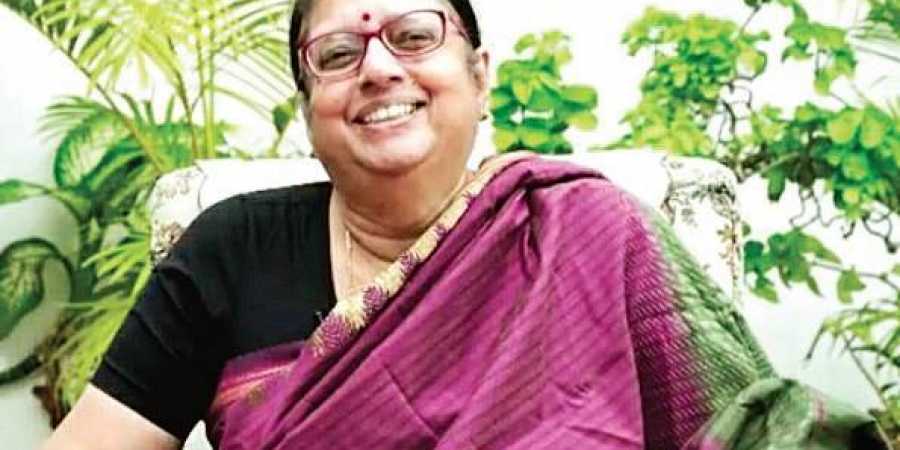
Chennai :
Dr Udaya Mahadevan was like a banyan tree, who provided shade on a sunny day, and home for all kinds of species to nurture and grow.The retired professor Emeritus of the Department of Social Work at Loyola College passed away on March 16 this year. An educator, practitioner, and researcher — she was a rare package who excelled at everything.
“She was a great teacher and has been a friend and mentor to many people who call themselves social workers today,” said TNM Deepak, president of December 3 Movement, a disability rights group. “She was a strong activist and a gender-sensitive social worker. She exemplified what a social worker should be like and her life is one that should be celebrated,” he shared.
She was from the 1973-1975 batch at Stella Maris College and completed her postgraduate degree in Social Work in the academic year 1974-1975. Subsequently, she received her Doctoral degree at the National Institute of Mental Health and Neurosciences (NIMHANS) Bengaluru, which was supported by the Faculty Development Programme, a fellowship offered to teachers by the University Grants Commission.
Udaya joined Loyola College Chennai as a faculty member of the Department of Social Work in 1977. During her tenure, she served as faculty coordinator of the Centre for Women Studies and the Centre for Social Inclusion and Dalit Studies.
To Udaya, social work was more than just ‘work.’ It was what she lived and breathed for. Her passion to enrich people’s lives, the drive to make society better, compassion for anyone in need, and iron will drove her to go to great lengths to be the force that she was. “At her core, it was her responsiveness that defined her,” said Vandana Gopikumar, one of the founders of The Banyan.
“She was non judgmental, an advocate for commemorating all family occasions by donating to NGOs eschewing rituals, an active blood donor from her college days, passionately involved in the rehabilitation of the handicapped, funding of fees/books etc. to the marginalised sections and a mentor for most city-based NGOs. Despite being terminally ill, she never fussed and went about her business calmly. We, of her circle, can only recall the haunting lines of Andy Williams ‘we had joy, we had fun, we had seasons in the sun,’” said VM Prakash, brother of Dr Udaya.
A recipient of several prestigious awards, Udaya gained due recognition even as a young teacher. She won an award from the Indian Society of Psychiatric Social Work for her paper on Community Mental Health presented at the National Conference at Bengaluru. The Indian Council of Social Science Research (ICSSR) rightly recognised her as an Eminent Social Scientist as part of their Collegium comprising 250 social scientists in the country for 2016- 2017. “Her contribution is immeasurable. The service sector today is deteriorating. But, she was the gold standard in social work. She would serve those in need without ever looking at their background. I have seen her carrying people, waiting for hours till someone arrived to help a homeless person,” said Aspy Joyson, founder of Aruwe.
As a keen researcher, she contributed to the frontiers of Social Action Research. In this connection, she has been awarded the Dr Yedanapalli Research Award, the Dr TN Ananthakrishnan Commemoration Award and the Loyola College Research fellowship award. As a practitioner, she supported several NGOs, particularly Jeevodaya.
Hospice for cancer patients, she was active in enhancing the teaching and practice of professional social work at several social work teaching institutions. “Her academic achievements are well-known but what many don’t know is that she was a very good singer and was a delightful narrator of stories. She was humourous and witty while also being very knowledgeable. Her funeral was attended by so many people. It just goes to show that she truly touched so many lives,” shares Prakash.
A devoted social work educator, an ardent field practitioner, and a keen social researcher she has quietly and steadily contributed to the progress of social work education and societal development. Much like a banyan tree, which is considered to be a symbol of immortality, Dr Udaya too will live on through the numerous lives she has touched.
source: http://www.newindianexpress.com / The New Indian Express / Home> Cities> Chennai / by Dia Rekhi / Express News Service / March 26th, 2019
